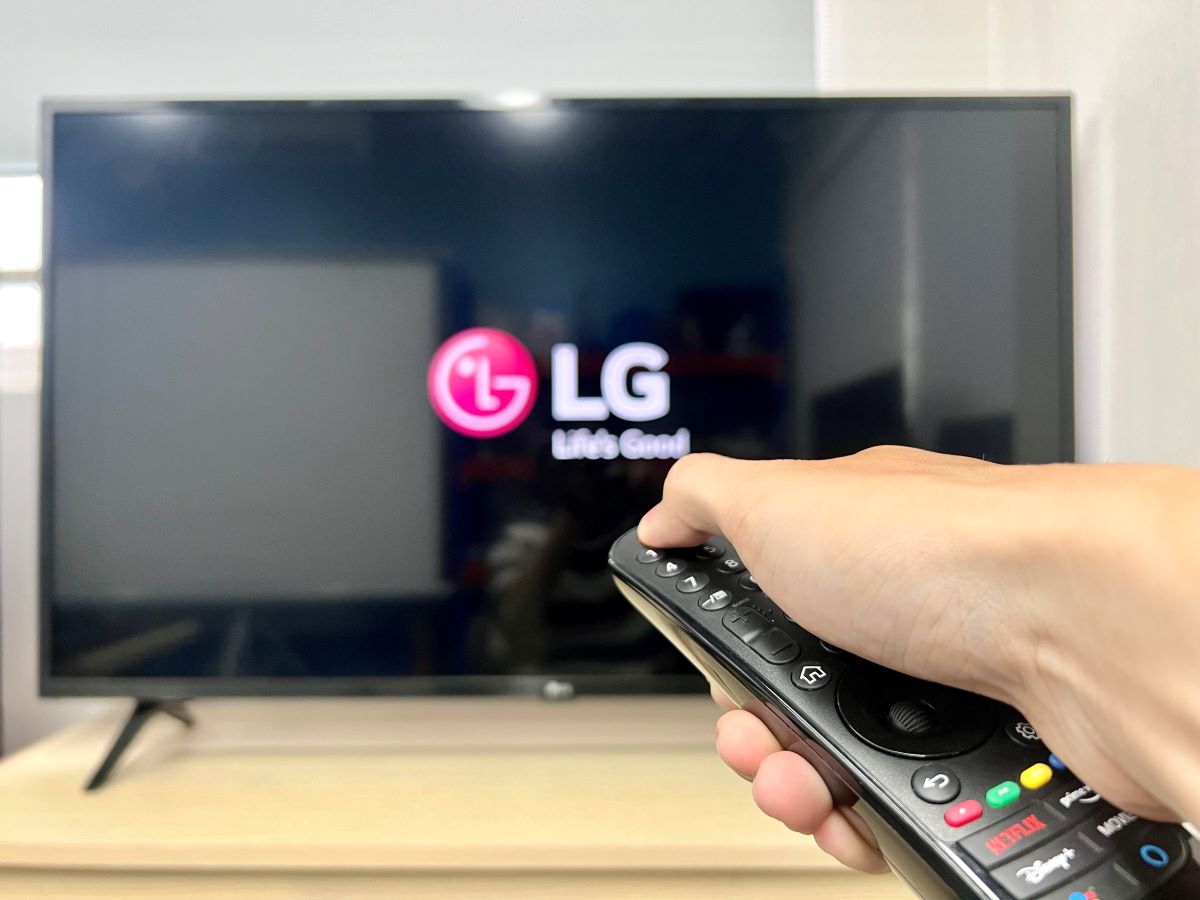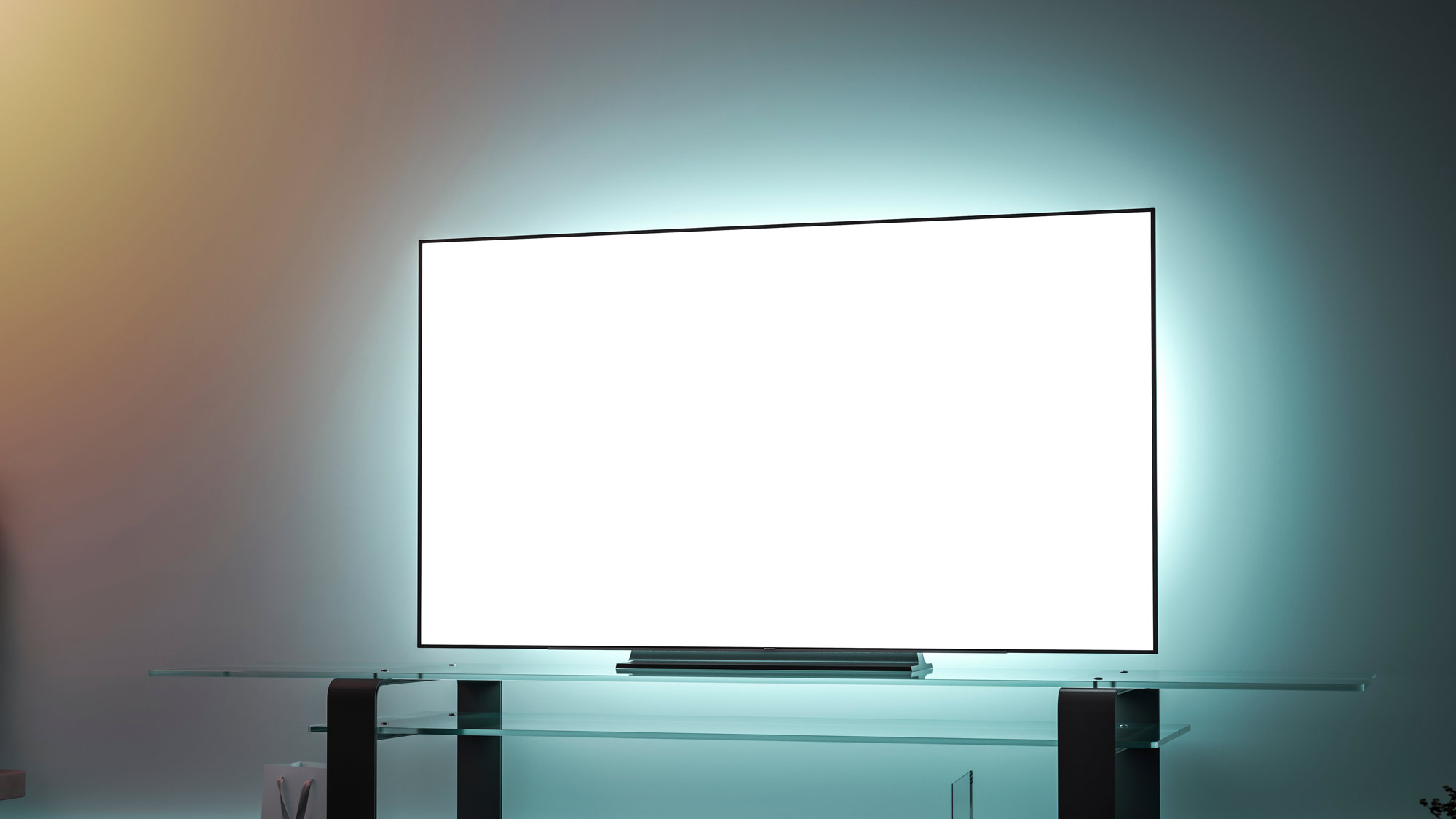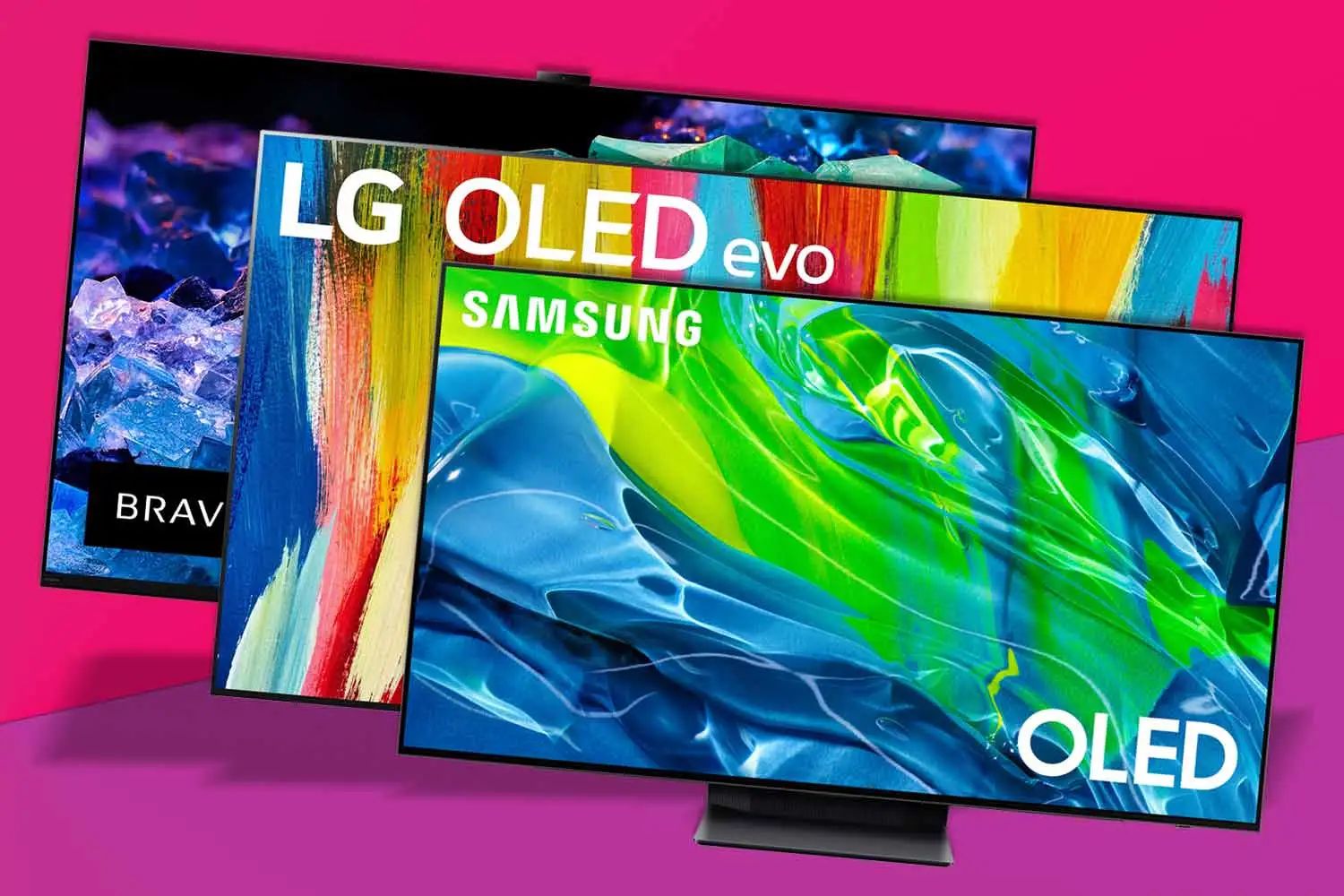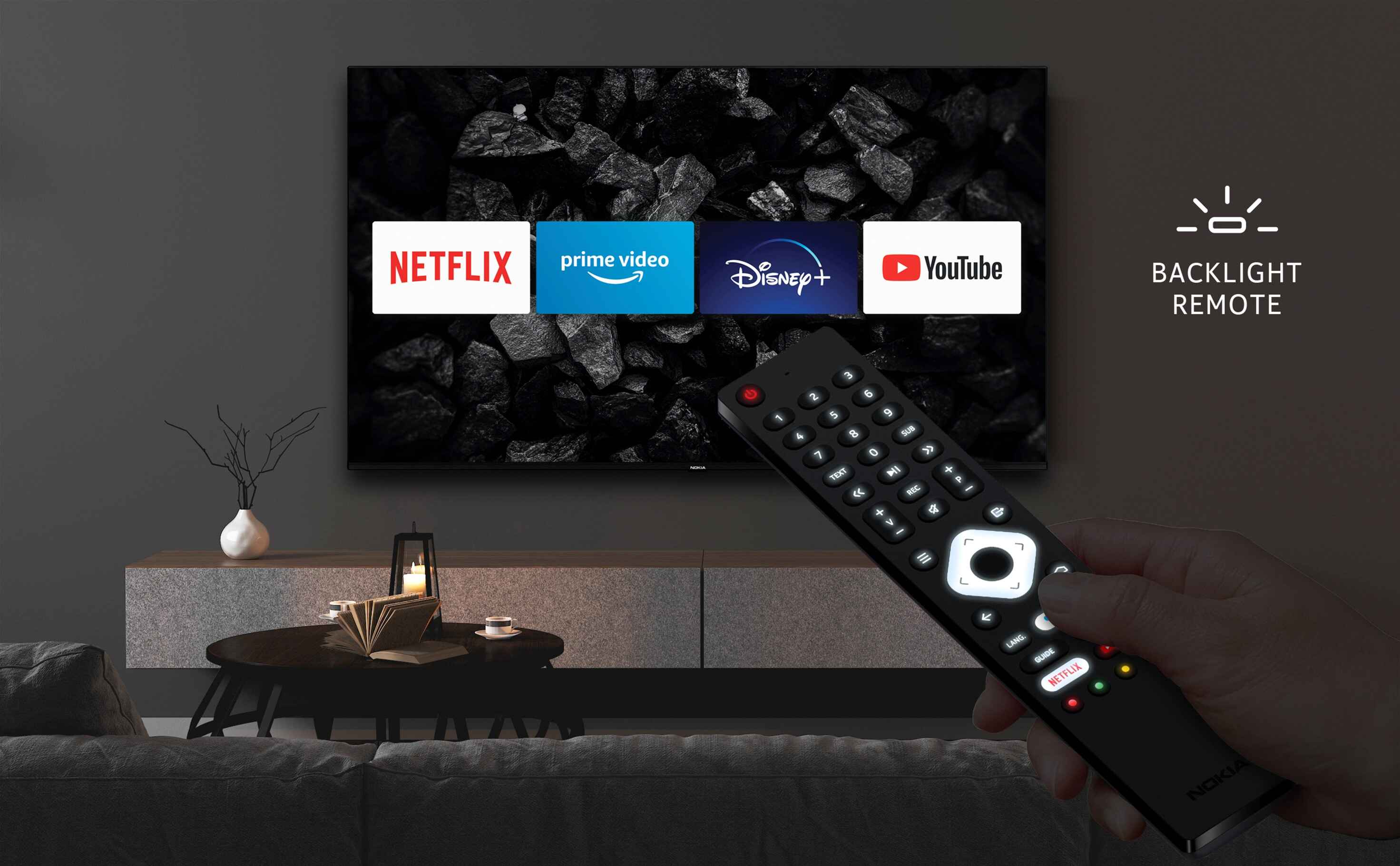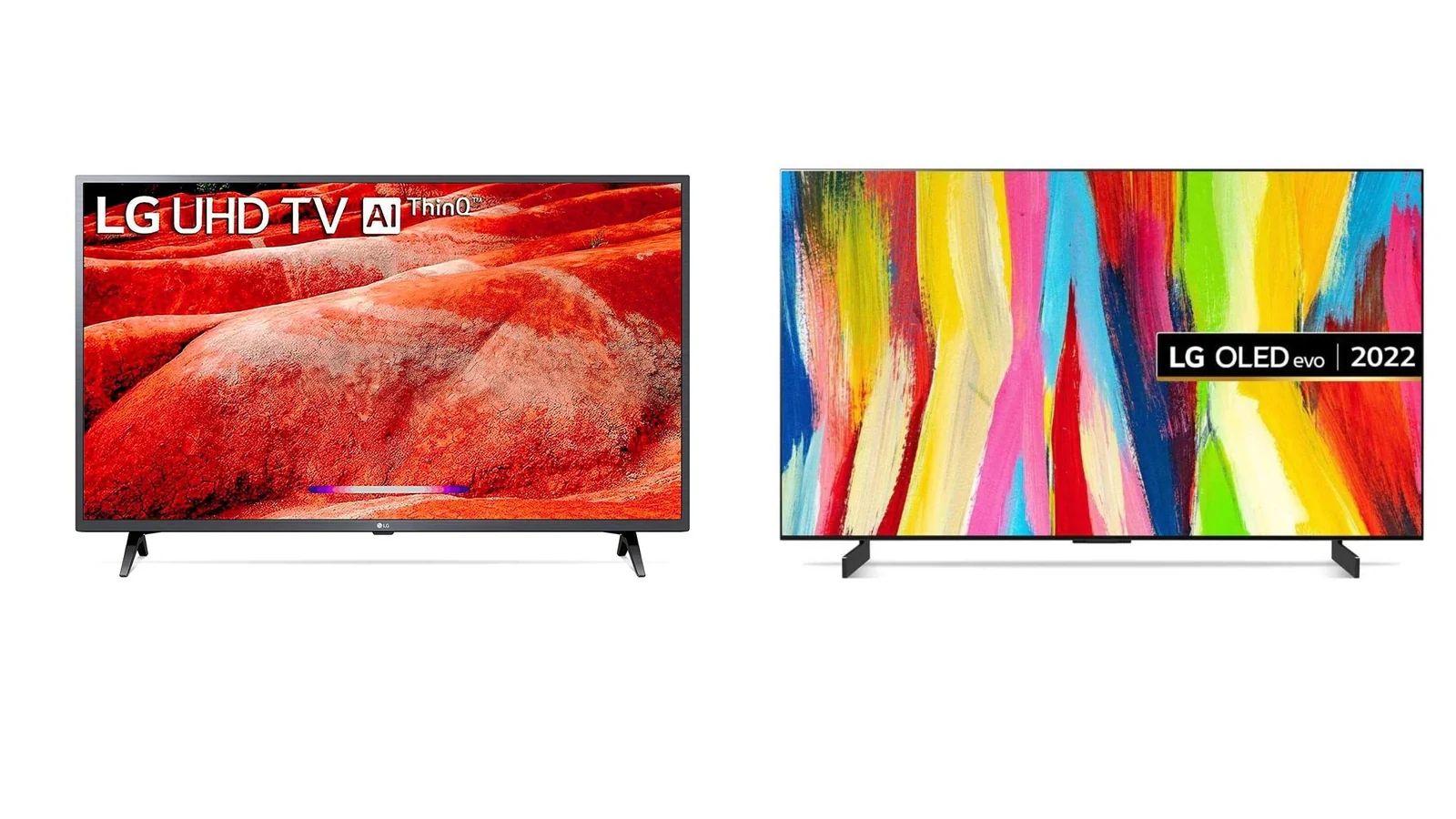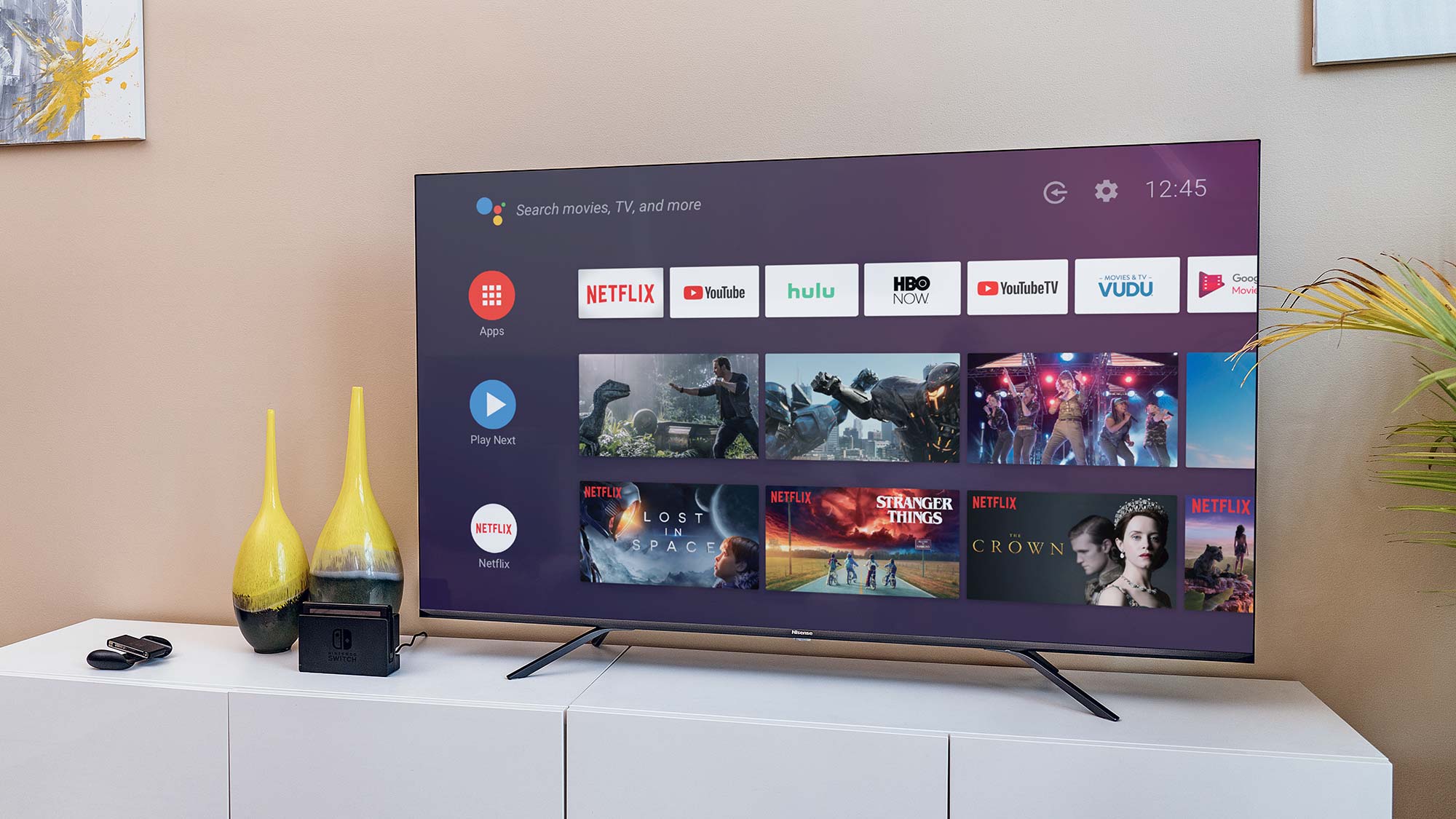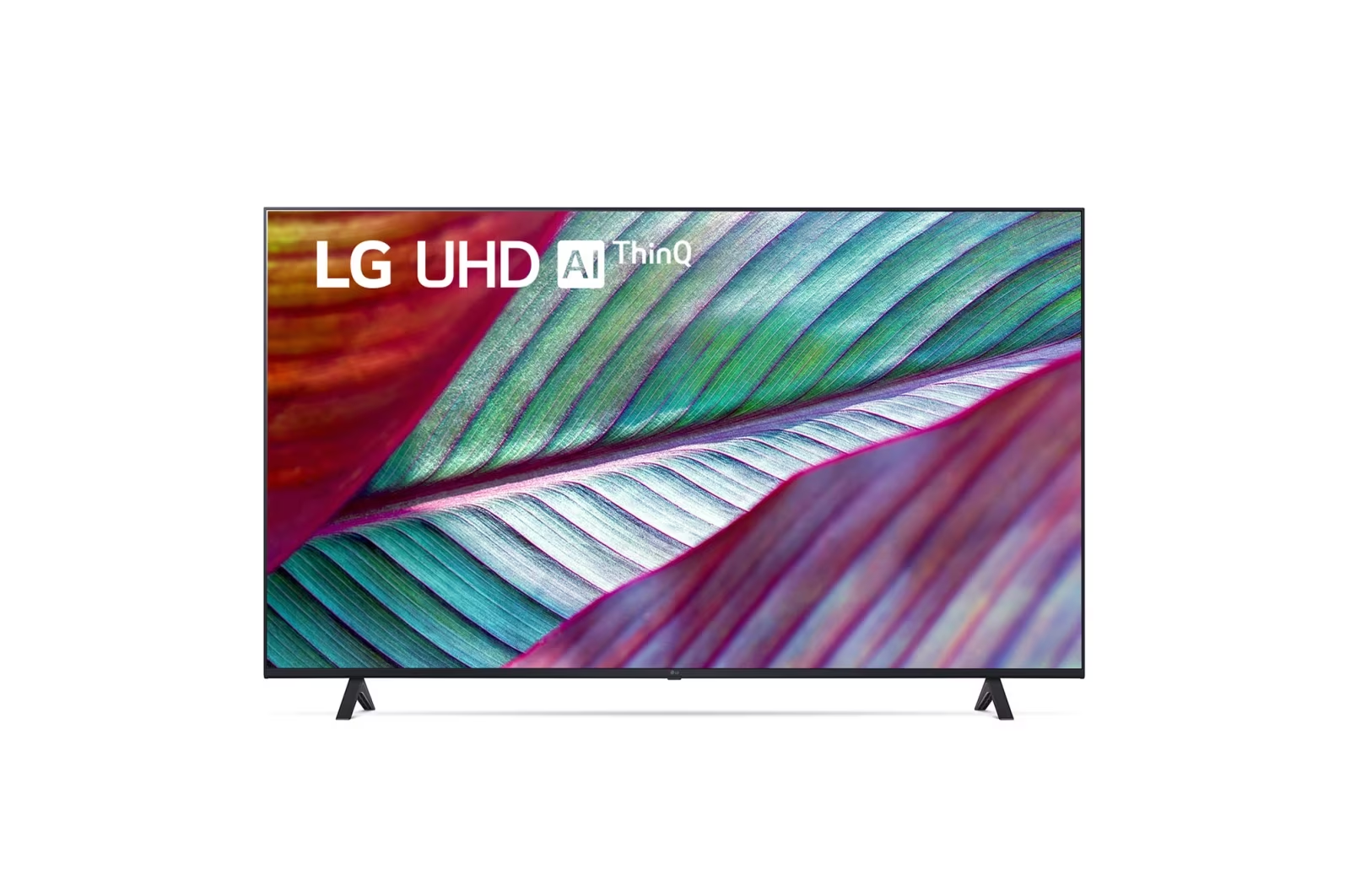Introduction
LG LED TVs have become increasingly popular in recent years, thanks to their sleek design, vibrant picture quality, and advanced features. As a savvy consumer, it’s natural to wonder how long an LG LED TV can be expected to last. While there is no definitive answer, understanding the factors that influence the lifespan of an LG LED TV can provide valuable insights into its durability.
LG, a renowned brand in the electronics industry, is known for producing high-quality products. However, the lifespan of any electronic device can be influenced by various factors, including the quality of the components, usage patterns, environmental conditions, and maintenance practices.
In this article, we will delve into these factors and provide you with an understanding of how long an LG LED TV typically lasts. Additionally, we will discuss signs that may indicate a degrading TV and provide some tips on how to extend the lifespan of your LG LED TV.
It’s important to note that the lifespan mentioned in this article is an estimation based on general observations and industry knowledge. Individual experiences may vary, and certain unforeseen circumstances can affect the longevity of your TV.
So, let’s dive in and explore the factors that play a role in determining the lifespan of an LG LED TV.
Factors that Affect the Lifespan of an LG LED TV
The lifespan of an LG LED TV can be influenced by several factors. Understanding these factors can help you make informed decisions about your purchase and ensure that you get the most out of your TV for years to come. Let’s take a closer look at these factors:
- Quality of Components: The quality of the components used in manufacturing an LG LED TV plays a crucial role in its lifespan. High-quality components are designed to withstand the test of time and provide reliable performance. LG is known for its commitment to quality, which often translates into longer-lasting TVs.
- Usage Patterns and Durability: How you use your LG LED TV can affect its lifespan. TVs that are used for extended periods, such as being left on for hours on end or used for gaming or streaming content extensively, may experience a shorter lifespan. On the other hand, TVs that are used moderately and given breaks between usage tend to last longer. It’s also essential to handle the TV with care and follow the manufacturer’s guidelines for cleaning and maintenance.
- Environmental Factors: The environment in which your LG LED TV is placed can impact its longevity. High humidity levels, extreme temperatures, and excessive dust can affect electronic components and lead to premature failure. It’s advisable to keep your TV in a well-ventilated area and ensure that it is protected from any potential environmental hazards.
- Power Surges and Electrical Issues: Power surges and electrical fluctuations can pose a risk to your LG LED TV. A sudden surge in electricity can damage the delicate internal circuitry of the TV. Using surge protectors or voltage regulators can help protect your TV from any sudden power fluctuations.
- Maintenance and Repairs: Regular maintenance and timely repairs are essential to prolong the lifespan of your LG LED TV. Dust accumulation can hinder proper ventilation and cause overheating, leading to component failure. Periodically cleaning the TV with a soft, lint-free cloth and avoiding harsh cleaning chemicals is recommended. Additionally, getting any technical issues addressed by qualified professionals can prevent further damage.
By considering these factors and taking appropriate measures, you can help ensure that your LG LED TV lasts for a long time, providing you with years of entertainment and enjoyment.
Quality of Components
The quality of components used in manufacturing an LG LED TV has a significant impact on its overall lifespan. LG is well-known for its commitment to producing high-quality products, and this extends to the components that go into their LED TVs.
When it comes to the internal components of an LG LED TV, the brand utilizes advanced technologies and materials to ensure durability and reliability. This includes top-of-the-line LED panels, power supply units, circuit boards, and other crucial components.
High-quality LED panels are designed to deliver exceptional picture quality and color accuracy while minimizing the risk of dead pixels or discoloration over time. The power supply unit, which is responsible for providing the necessary power to the TV, is engineered to handle fluctuations in electricity supply and provide stable performance.
The circuit boards, including the mainboard and the control board, carry out critical functions such as signal processing and connectivity. By utilizing high-quality circuit boards, LG is able to minimize the risk of electrical issues and maximize the lifespan of the TV.
Another important component is the backlight system. LG employs advanced backlight technologies, such as direct-lit or edge-lit LEDs, to provide uniform brightness and enhance the viewing experience. These backlight systems are designed to be energy-efficient and long-lasting, further contributing to the overall longevity of the TV.
Furthermore, LG conducts rigorous testing and quality control measures during the manufacturing process to ensure that each component meets stringent standards. This includes subjecting the TVs to various performance and reliability tests to identify and address any potential issues before they reach the market.
By using high-quality components and implementing stringent quality control measures, LG aims to provide consumers with TVs that not only deliver excellent performance but also have a longer lifespan. Investing in an LG LED TV means you can have confidence in the durability and reliability of the components that make up the television.
However, it’s important to remember that the lifespan of any electronic device can still be influenced by external factors and usage patterns. Taking proper care and following the manufacturer’s guidelines can further enhance the lifespan of your LG LED TV.
Usage Patterns and Durability
How you use your LG LED TV can significantly impact its lifespan. While LG TVs are designed to handle normal daily usage, certain usage patterns may affect their durability and longevity.
One crucial factor to consider is the amount of time the TV is powered on. Continuous and extended usage, such as leaving the TV on for hours on end, can cause the internal components to generate more heat and experience more wear and tear. This can potentially lead to a shorter lifespan for the TV.
Additionally, specific activities, such as gaming or streaming content for prolonged periods, can put additional strain on the TV. Graphics-intensive games or high-resolution videos can put a heavier load on the internal hardware, potentially leading to more wear and tear over time. While modern LG LED TVs are designed to handle these activities, it’s a good practice to give your TV breaks and avoid excessive and uninterrupted usage.
Properly managing the TV’s settings and features can also contribute to its durability. Adjusting the brightness and contrast settings to appropriate levels can help prevent unnecessary strain on the TV’s backlight system, extending its lifespan. Additionally, enabling power-saving modes and turning off the TV when not in use can further reduce the stress on the internal components and conserve energy.
Handling the TV with care is also essential for maintaining its durability. Avoid applying excessive pressure or force when cleaning the screen or adjusting the TV’s position. Using a soft, lint-free cloth is recommended for cleaning the screen, and avoiding abrasive materials or harsh cleaning chemicals can prevent damage to the display.
It’s worth noting that LG LED TVs are designed to handle normal domestic environments and usage. However, if you intend to use the TV in a commercial setting or under extreme conditions, it’s advisable to choose a commercial-grade or more robust model that is specifically designed for those purposes.
Following these usage guidelines and incorporating good practices can help improve the durability of your LG LED TV. By taking care of the TV and using it in a responsible manner, you can enjoy its exceptional picture quality and performance for a longer period.
Environmental Factors
The environment in which your LG LED TV is placed can have a significant impact on its lifespan. Certain environmental factors can affect the internal components of the TV and potentially shorten its durability. Understanding these factors can help you create an optimal environment for your TV and maximize its lifespan.
One important environmental consideration is the level of humidity. High humidity levels can contribute to the accumulation of moisture inside the TV, leading to corrosion of the internal components. This can result in malfunctions and reduced lifespan. To mitigate this risk, it’s advisable to keep your TV in a room with controlled humidity levels, or if necessary, use a dehumidifier to maintain optimal conditions.
Extreme temperatures can also affect the performance and longevity of an LG LED TV. Exposure to excessive heat or cold can cause stress on the internal components, potentially leading to malfunctions or even permanent damage. Ideally, the TV should be kept in an environment with a moderate temperature range, avoiding direct exposure to sunlight or other heat sources.
Another consideration is the presence of dust and debris. Dust can accumulate inside the TV, obstructing airflow and causing overheating. Regular cleaning of the TV and the surrounding area can help prevent dust buildup and ensure proper ventilation. Using a soft, lint-free cloth is recommended to clean the TV, and avoiding the use of harsh cleaning chemicals can protect the display and other components.
Additional environmental factors to consider include electromagnetic interference and power surges. Electromagnetic interference from nearby electronic devices can disrupt the TV’s signals and affect its performance. Placing the TV away from other devices and using shielded cables can reduce the impact of electromagnetic interference. Power surges, caused by fluctuations in electricity supply, can also pose a risk to the TV’s internal circuitry. Using surge protectors or voltage regulators can help safeguard the TV against sudden voltage spikes and ensure its longevity.
By taking these environmental factors into account and creating a suitable environment for your LG LED TV, you can help prolong its lifespan and ensure optimal performance. Keeping the TV in a well-ventilated area, maintaining controlled humidity levels, and protecting it from dust and power surges can contribute to its durability and longevity.
Average Lifespan of an LG LED TV
The average lifespan of an LG LED TV can vary depending on several factors, including the model, usage patterns, and maintenance. While there is no exact figure, it’s generally accepted that an LG LED TV can last anywhere from 7 to 10 years.
It’s important to note that this is an estimation and individual experiences may vary. Some users may find their LG LED TVs lasting well beyond the 10-year mark, while others may encounter issues within a shorter timeframe. Factors such as the quality of components, usage patterns, and environmental conditions can influence the longevity of the TV.
LG is renowned for its commitment to producing high-quality products, and their LED TVs are no exception. By using top-notch components and implementing rigorous quality control measures, LG strives to ensure that their TVs perform optimally and have a longer lifespan.
However, it’s crucial to consider how the TV is used and maintained. TVs that are subjected to prolonged usage, excessive gaming, or other intensive activities may experience more wear and tear, potentially leading to a shorter lifespan. Likewise, TVs that are exposed to harsh environmental conditions, such as high humidity or extreme temperatures, may also be at risk of reduced longevity.
Regular maintenance and care can also contribute to extending the lifespan of an LG LED TV. Dust accumulation can hinder proper ventilation and cause overheating, so it’s important to clean the TV periodically using a soft, lint-free cloth. Following the manufacturer’s guidelines for cleaning and avoiding the use of harsh chemicals is advisable.
Additionally, addressing any technical issues promptly and seeking professional assistance for repairs can help prevent further damage to the TV. By taking proactive measures and exercising responsible usage and maintenance practices, you can maximize the lifespan of your LG LED TV and enjoy it for years to come.
While there are no guarantees when it comes to the lifespan of any electronic device, investing in an LG LED TV and employing proper care can help ensure that it lasts for a considerable period, providing you with high-quality entertainment and value for your investment.
Signs of a Degrading TV
Over time, an LG LED TV may show signs of degradation as it approaches the end of its lifespan. Recognizing these signs can help you identify when your TV needs attention or potentially requires replacement. Here are some common signs of a degrading TV:
- Dimming or Flickering: If you notice that your LG LED TV’s brightness has significantly decreased or the screen flickers intermittently, it may be a sign of a deteriorating backlight or power supply unit. This can occur as the TV ages and may require professional assessment and repair.
- Color Distortion: Gradual color shifts or a noticeable change in color accuracy can indicate a problem with the display panel or color processing circuitry. If you are experiencing abnormal coloration or inconsistent color reproduction, it may be an indicator that your TV is degrading.
- Dead or Stuck Pixels: A dead pixel appears as a dark spot on the TV screen that does not display any color, while a stuck pixel remains stuck on a particular color, usually bright red, green, or blue. While a few isolated dead or stuck pixels are common and not necessarily a cause for concern, an increasing number of them may be an indication of a deteriorating display.
- Slow or Unresponsive Performance: As a TV ages, you may notice slower response times and delays when navigating menus or switching between inputs. If the TV becomes unresponsive to commands or experiences frequent freezes, it could be a sign of internal hardware issues.
- Audio Problems: Sound-related issues, such as distorted audio, inconsistent volume levels, or complete loss of sound, may indicate problems with the TV’s internal speakers or audio processing circuitry. While external factors, such as faulty cables or poor signal quality, can also cause these issues, consistent and recurring audio problems can be a sign of a degrading TV.
If you encounter any of these signs or notice other irregularities with the performance or display quality of your LG LED TV, it’s recommended to consult a professional technician or reach out to LG’s customer support for assistance. They can provide guidance on troubleshooting steps or assess whether repair or replacement is necessary.
It’s important to remember that these signs may not necessarily guarantee that your TV is nearing the end of its lifespan, as certain issues can be resolved through repairs or adjustments. However, being aware of these signs can help you take timely action and ensure that you continue to enjoy a high-quality viewing experience.
Extending the Lifespan of an LG LED TV
While the lifespan of an LG LED TV can be influenced by various factors, there are steps you can take to extend its longevity and ensure optimal performance. By following these guidelines, you can maximize the lifespan of your LG LED TV:
- Proper Ventilation: Ensure that your TV is placed in a well-ventilated area. Avoid blocking any vents or sealing the TV in an enclosed space, as this can lead to overheating and reduce the lifespan of the internal components.
- Controlled Usage: Avoid prolonged periods of continuous usage. Give your TV breaks and avoid leaving it on for extended periods when not in use. This helps in minimizing heat buildup and stress on the internal components.
- Optimal Picture Settings: Adjust the TV’s brightness, contrast, and other picture settings to appropriate levels. Excessive brightness can strain the backlight, while excessive contrast can lead to accelerated deterioration. By finding a balance and not overdriving these settings, you can preserve the display’s lifespan.
- Regular Cleaning: Dust accumulation can obstruct the TV’s ventilation and cause overheating. Clean the TV regularly using a soft, lint-free cloth to remove dust and dirt from the screen, vents, and other areas. Avoid using harsh cleaning chemicals that may damage the display or other components.
- Protect Against Power Surges: Use surge protectors or voltage regulators to safeguard your TV against power surges and voltage fluctuations. Power surges can damage the internal circuitry and reduce the lifespan of your LG LED TV. Investing in surge protection can help prevent these issues.
- Professional Maintenance: If you encounter any technical issues or notice performance inconsistencies, seek professional assistance for repairs. Attempting DIY repairs can potentially cause further damage. Regular maintenance checks by qualified technicians can also help identify any potential problems early on and prolong the lifespan of your TV.
By following these guidelines and adopting responsible usage and maintenance practices, you can extend the lifespan of your LG LED TV and ensure that it continues to deliver excellent performance for a longer period.
Keep in mind that every electronic device has a natural lifespan, and individual experiences may vary. While these tips can help maximize the lifespan, there may still be unforeseen circumstances that can affect the TV’s longevity. However, by being proactive and taking care of your LG LED TV, you can enjoy its cutting-edge features and immersive entertainment for an extended duration.
Conclusion
LG LED TVs are renowned for their sleek design, vibrant picture quality, and advanced features. While the exact lifespan of an LG LED TV can vary depending on several factors, including usage patterns and maintenance, it’s generally estimated to be around 7 to 10 years. By considering the quality of components, usage patterns, environmental factors, and practicing proper maintenance, you can extend the lifespan of your LG LED TV and enjoy its exceptional performance for a longer period.
LG ensures the durability and reliability of their LED TVs by incorporating high-quality components and implementing stringent quality control measures during the manufacturing process. However, the way you use your TV and its exposure to environmental factors can also impact its longevity. Properly managing usage patterns, optimizing picture settings, maintaining adequate ventilation, and protecting against power surges are all important considerations for prolonging the lifespan of your TV.
Being aware of signs of a degrading TV, such as dimming or flickering, color distortion, dead or stuck pixels, slow performance, or audio problems, can help you identify when your TV may need attention or potentially require replacement. Promptly addressing these issues through professional repairs or seeking assistance from LG’s customer support can help extend the lifespan of your TV.
Ultimately, while there are measures you can take to extend the lifespan of your LG LED TV, it’s important to remember that the lifespan mentioned in this article is an estimation. Individual experiences may vary, and certain unforeseen circumstances can affect the longevity of your TV.
By investing in an LG LED TV and giving it proper care and attention, you can enjoy its excellent picture quality, immersive entertainment, and advanced features for years to come. Stay mindful of the factors that influence its lifespan and take proactive steps to ensure its durability, allowing you to make the most of your LG LED TV for an extended period of time.







